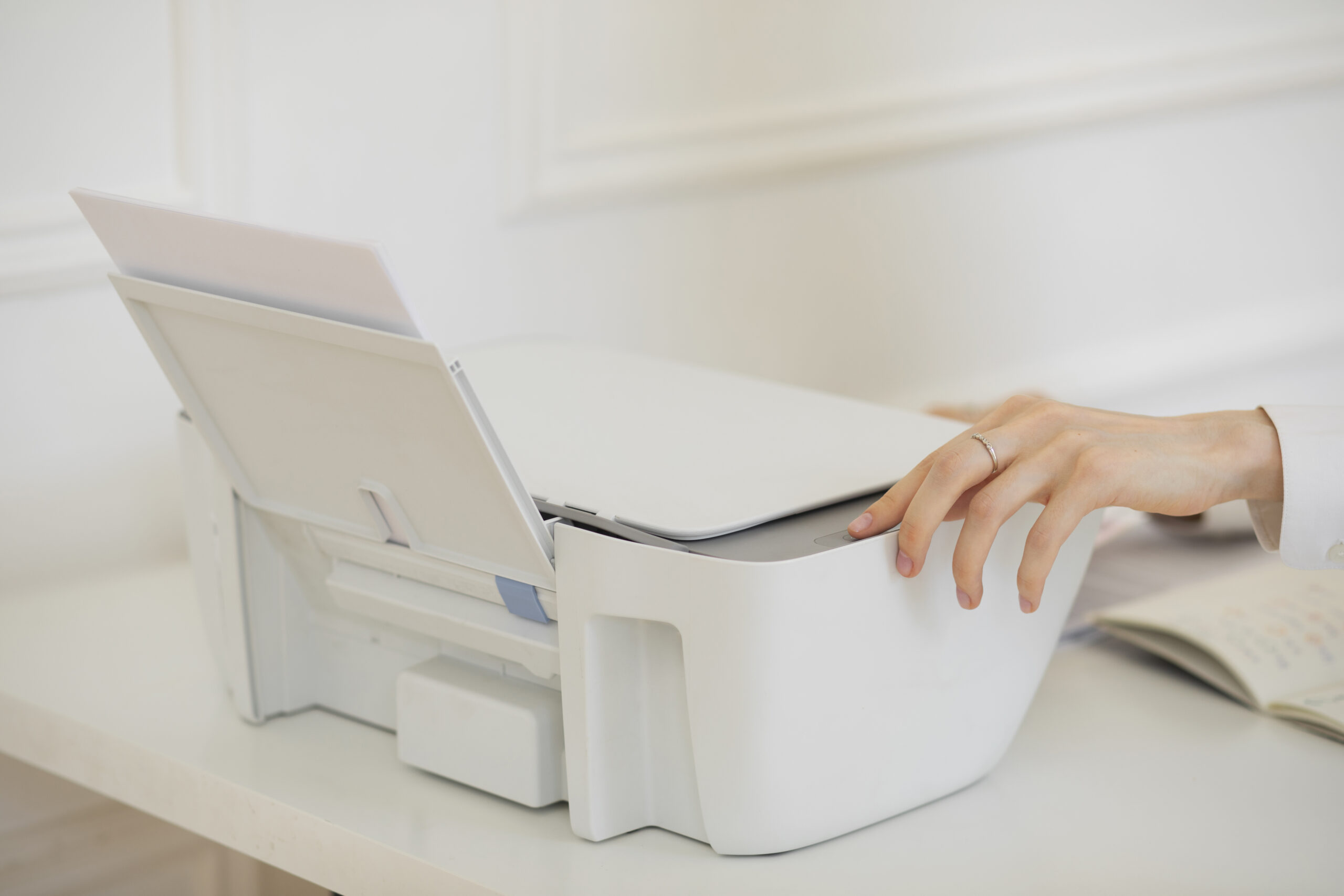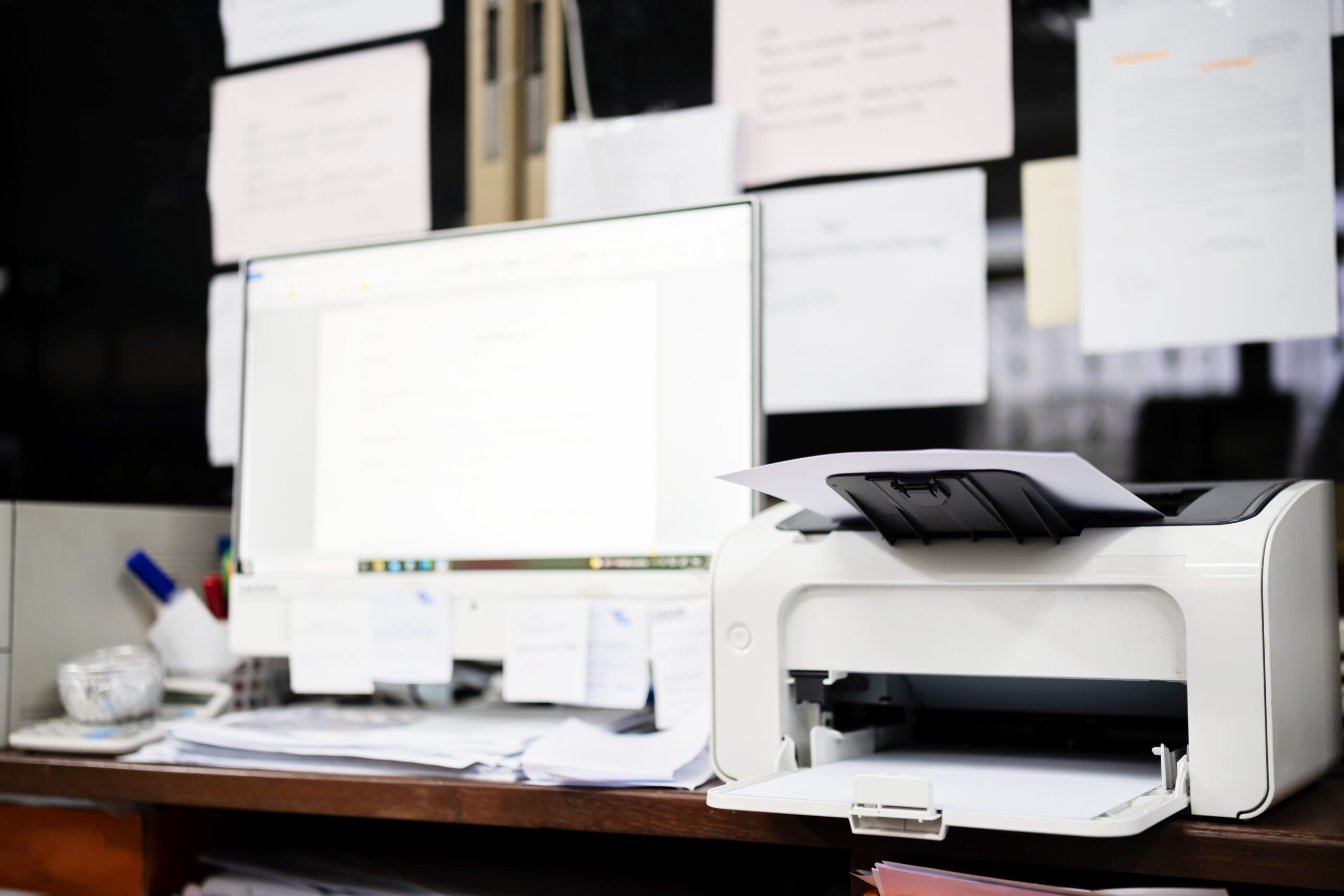Save Ink and Printing Costs: Smart Settings You Should Use

Ink and paper costs creep up because defaults aren’t built for thrift. A few quiet choices—greyscale as the baseline, duplex for drafts, a lighter density step, leaner layouts, and proper image prep—reduce spend immediately while keeping documents clear and credible. This guide is written in UK English, brand-neutral, and focused on practical habits you can apply today in homes and small offices. You’ll learn how each print setting communicates cost, where layout decisions silently add pages, why images need resizing before they reach the driver, and which maintenance habits prevent the reprints that devastate budgets. Follow the methods section by section, copy the presets, and you’ll feel the saving by the next print run.
Understand what you’re paying for (so you can control it)
Every page has two bills: ink/toner laydown and paper consumption. The print mode, colour policy, and coverage density steer cartridge usage; margins, type sizes, and page structure decide how many sheets the job consumes. Unreliable workflows add a third cost—reprints—caused by smudges, jams, or misaligned output. The fastest wins come from switching to greyscale and duplex by default, trimming page sprawl with tidy templates, and exporting to PDF before you print. That small routine prevents most layout surprises and odd driver bugs, letting you spend less without accepting shabby output.
| Levers | What to change | Why it saves | Risk if ignored |
|---|---|---|---|
| Mode | Draft/Normal for drafts | Lower droplet/toner density | Heavy laydown and slow drying |
| Colour | Greyscale baseline | Pure black for text | Composite blacks drain colour |
| Duplex | On for internal copies | Halves paper use | Instantly doubles paper spend |
| Layout | Lean margins & hierarchy | Fewer pages, better flow | Widows/orphans cause extra sheets |
| Images | Resize & 200–300 dpi | Less ink, faster drying | Bloated files & smudges |
| Preview | Always before print | Catch blanks/overflows | Wasted reprints |
Quick wins you can use today
- Greyscale default: Forces pure black for text and tables. Colour remains available when you select a different preset.
- Density −1: A minor reduction maintains legibility but meaningfully reduces ink laydown across long documents.
- Template discipline: One approved layout for internal docs avoids page bloat and random styles that burn ink.
| Change | How to apply | Typical saving | Quality impact |
|---|---|---|---|
| Greyscale baseline | Driver preset / OS preset | 30–60% colour use on text jobs | None on text; charts may need labels |
| Duplex default | Driver preset / OS preset | ≈50% paper on suitable jobs | Requires tidy layouts |
| Density −1 | Quality/Media → Density | 5–15% black ink | Text still crisp at Normal |
Choose the right quality mode on purpose
Quality modes are your biggest lever. Draft/Economy lightens laydown and speeds motion—ideal for notes, mark-ups, and internal approvals. Normal suits most day-to-day work. High and Photo modes should be rare, reserved for final submissions and images that warrant richer tone gradation. Think of modes like gears: start in low for manoeuvring, cruise in Normal, and only use high when the road justifies the fuel.
| Mode | Best for | Speed | Ink/Toner | Comment |
|---|---|---|---|---|
| Draft/Economy | Notes, internal review | Fast | Very low | Pairs well with duplex |
| Normal | Everyday documents | Moderate | Medium | Default for most |
| High/Photo | Finals, images | Slow | High | Use only when needed |
Greyscale first; use colour only when it adds meaning
Colour is persuasive but expensive. Many drivers build black using colour channels when colour mode is on. Greyscale ensures the device uses the black cartridge only for text-heavy jobs. Replace colour-coded charts with labelled lines, patterns, or symbols. When colour is essential, limit the palette and keep fills light; strong solids cost more and take longer to dry, increasing smudge risk and reprint probability.
Duplex and page economy (the paper saver)
Turning on duplex halves paper instantly for suitable documents. The bigger gain, however, comes when you design for two-sided pages from the start: consistent headings, controlled margins, and content that avoids heavy solids near the binding edge. For handouts, use multi-slide per page layouts instead of full-bleed slides. For forms, leave enough margin for hole-punching without shifting line breaks across sides.
| Document type | Recommended stock | Preset | Notes |
|---|---|---|---|
| Drafts & reports | 90–100 gsm | Duplex + Normal | Stiffer stock reduces curl |
| Handouts | 80–90 gsm | Duplex + Draft | 4–6 slides per page |
| Certificates | 120–160 gsm | Single-sided + High | Use sparingly |
Fonts, sizes, and layouts that look clean and cost less
Fonts vary in ink appetite. Heavy display faces were built for posters, not pages. For long documents pick a robust text face, keep body at 10–11.5 pt for drafts, and reserve bold for headings. Reduce decorative panels and rely on spacing and alignment for hierarchy. For tables, use thin rules with restrained shading; dense fills add cost and hinder readability.
| Change | Why it saves | Practical move |
|---|---|---|
| Body 10–11.5 pt | Fewer pages; clear flow | Test on paper, not just screen |
| Minimal bold | Less heavy coverage | Use spacing for emphasis |
| Thin table rules | Lower laydown | Alternate row tint only if needed |
Optimise images and charts before they reach the driver

Phone photos are massive: 3000–4000 pixels wide when a quarter of that would print just as cleanly on A4 at typical reading distance. Resize images to the physical dimensions used on the page, export at 200–300 dpi for documents, and crop empty backgrounds. For charts, prefer vectors or crisp PNGs, with labels doing the work instead of saturated fills. The goal is legibility with minimal coverage.
| Asset | Prep | Reason |
|---|---|---|
| Photos | Resize; 200–300 dpi; tight crop | Less ink; faster drying; smaller files |
| Logos | Vector (SVG/PDF) or sharp PNG | Crisp edges at small sizes |
| Charts | Labels + patterns, no heavy fills | Reads cleanly in greyscale |
Preview: the cheapest tool you own
Always preview before printing. It catches blank trailing pages, overflows, and oddities that only appear on paper. In spreadsheets, define print areas and fit to width so totals don’t spill. In word processors, fix widows and orphans. From the web, use reader mode or print-friendly views to strip menus and adverts. For mail-merge, print five first; confirm alignment before the full run.
Maintenance that prevents reprints
Reprints are the most expensive pages you’ll ever make, because they follow failure. A tiny routine avoids them. Keep paper sealed and dry, print a one-page test weekly to keep heads flowing, wipe feed rollers monthly with a lint-free cloth, and avoid yanking jams—always pull along the feed direction. Update firmware quarterly; it often improves efficiency and connectivity.
Small office controls that stop runaway costs
Shared printers multiply tiny habits into big bills. The fix is structure, not scolding. Publish three presets near the device: Everyday (greyscale, duplex, normal), Colour lite (colour allowed, no backgrounds), and Final (high quality, single-sided only when required). Require preview for packs over ten pages. Reserve a static IP so the printer never “disappears” after a router reboot. Provide chart templates that print lean by design. Culture beats cartridges.

When cost-saving goes wrong (and how to fix it)
| Symptom | Likely cause | Do this first | If still bad |
|---|---|---|---|
| Pages look pale | Density too low | Raise density one notch | Switch to Normal; clean nozzles/rollers |
| Slow drying or smudge | Heavy coverage; glossy stock | Use Normal; reduce image area | Single-sided; allow extra dry time |
| Too many pages | Loose margins; widows/orphans | Tighten layout; preview | Handout view; consolidate tables |
| Colour drains fast | Composite blacks; backgrounds | Greyscale baseline | Remove tints; label charts |
Mini calculators: see the saving on real jobs
Example 1 — 40-page report, internal review
- Before: Colour on, single-sided, Normal → 40 sheets, heavy colour charts.
- After: Greyscale, Duplex, Normal, charts redesigned with labels → ≈20 sheets, lower laydown.
- Outcome: ~50% paper saved; colour use near zero; readability intact.
Example 2 — 10-page photo-heavy brief
- Before: Full-bleed images at native phone resolution.
- After: Cropped images at print size, 200–300 dpi, white backgrounds.
- Outcome: Faster printing, less ink, no smudge risk.
Example 3 — Spreadsheet pack
- Before: Spills to one lonely extra page; dense shading.
- After: Set print area, fit to width, thin rules.
- Outcome: Fewer sheets, clearer tables, lower laydown.
Cost-first printing policy you can copy-paste
- Greyscale + Duplex is the default for all internal documents.
- Colour is allowed only when it adds clarity; no decorative backgrounds.
- Preview is mandatory for jobs over ten pages or any mail-merge.
- Images must be resized and exported at 200–300 dpi for print size.
- Templates use thin rules, minimal bold, and labelled charts.
- Maintenance: weekly test page, monthly roller wipe, sealed paper.
| Preset | When to use | Key settings |
|---|---|---|
| Everyday Saving | All text-heavy drafts | Greyscale, Duplex, Normal, Density −1 |
| Reports Duplex-Thick | 90–100 gsm, two-sided | Heavier media path, Duplex on, Normal |
| Photo Final | Photos/certificates | High quality, single-sided, glossy media |
Deep dives: where teams usually overspend
1) Background tints and shaded panels
Decorative grey boxes and coloured panels create large continuous areas of toner/ink that add cost and risk offsetting on duplex. Use whitespace and typographic hierarchy instead. If a tint is necessary for emphasis, keep it light and local, not page-wide.
2) Full-bleed slides as handouts
Slides look great on screens but become expensive and smudge-prone when printed full-bleed. For handouts, export slides with a white background and use four or six per page with readable labels.
3) Photos at native size
Native phone photos are far larger than print needs. Resize to the intended on-page dimensions to reduce droplet/toner coverage and prevent slow drying or roller offset.
4) Unmanaged fonts
Heavy display fonts increase coverage without improving clarity. Standardise body faces, keep weights sensible, and avoid outline effects that render badly in greyscale.
Eco printing that still looks professional
Eco is not a punishment. Clean typography, logical spacing, and labelled charts read better and cost less than blocks of colour. Recycled paper can be excellent; test by the ream to confirm jam behaviour and contrast. Export to PDF for circulation where a screen will do, and annotate digitally to avoid reprints entirely.

Advanced troubleshooting when savings cause side-effects
| Change you made | Side-effect | Fix | Prevent next time |
|---|---|---|---|
| Density −1 or Draft | Pale small type | Use Normal for finals; keep Draft for internal | Increase body size 0.5 pt in templates |
| Duplex default | Show-through/curl | Use 90–100 gsm; avoid heavy fills near flip edge | “Reports Duplex-Thick” preset |
| Greyscale baseline | Charts lose clarity | Switch to colour for that chart only | Redesign with labels & patterns |
| Image downsizing | Perceived loss of detail | Use 300 dpi for small photos | Crop tighter; remove noisy backgrounds |
Make saving effortless
Put the right defaults in place once—greyscale, duplex, Normal, density −1—and let templates do the rest. Resize images before printing, preview always, and keep a tiny maintenance habit. Savings arrive quietly, pages look cleaner, and nobody complains that the output feels cheap. That’s the balance you’re after.

Guide Axis provides brand-neutral education only. No remote access, repairs, or warranty services.
FAQs
Is greyscale always cheaper than colour?
For text-heavy jobs, yes. Greyscale forces the device to use black only, avoiding composite blacks that drain colour cartridges unseen.
Will Draft mode make my pages look unprofessional?
Not for internal copies. Draft reduces density without destroying legibility. Use Normal or High only for finals that truly need it.
How much does duplex actually save?
Roughly half the paper on suitable documents. The real win grows when you also tidy layouts and avoid widows/orphans that spill onto extra pages.
What image resolution should I export?
Use 200–300 dpi at the physical print size. Higher rarely adds visible clarity for documents but does add ink and drying time.
Why do colour cartridges drop even when pages look black?
Colour mode can build black from CMY. Set greyscale as your baseline to keep text work on the black cartridge only.
My duplex pages curl or show through—fix?
Use 90–100 gsm stock, avoid heavy fills near the flip edge, and try a slightly slower “Thick/Heavy” path to reduce curl.
Do recycled papers jam more?
Quality varies. Test by the ream. Keep stacks sealed and dry; most jams blamed on paper are humidity or loading issues.
What’s the single best habit to cut waste this week?
Preview every time. It stops blank tails, overspill, and layout surprises. Pair it with a greyscale-duplex preset and you’ll see savings fast.
Should I switch fonts to save ink?
You don’t need exotic eco fonts. Sensible body sizes, minimal bold, and tidy tables save more than font swapping alone.
When is single-sided better than duplex?
Forms, certificates, and any submission that mandates single-sided. Keep duplex as default and override intentionally for these cases.
Can I force staff to use the right presets?
Make lean presets the default on shared machines, publish a short policy, and provide tidy templates. Culture and convenience beat enforcement.
